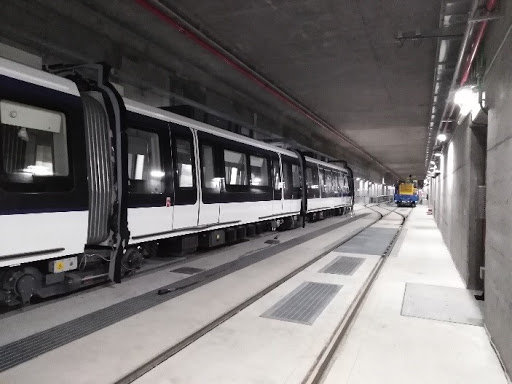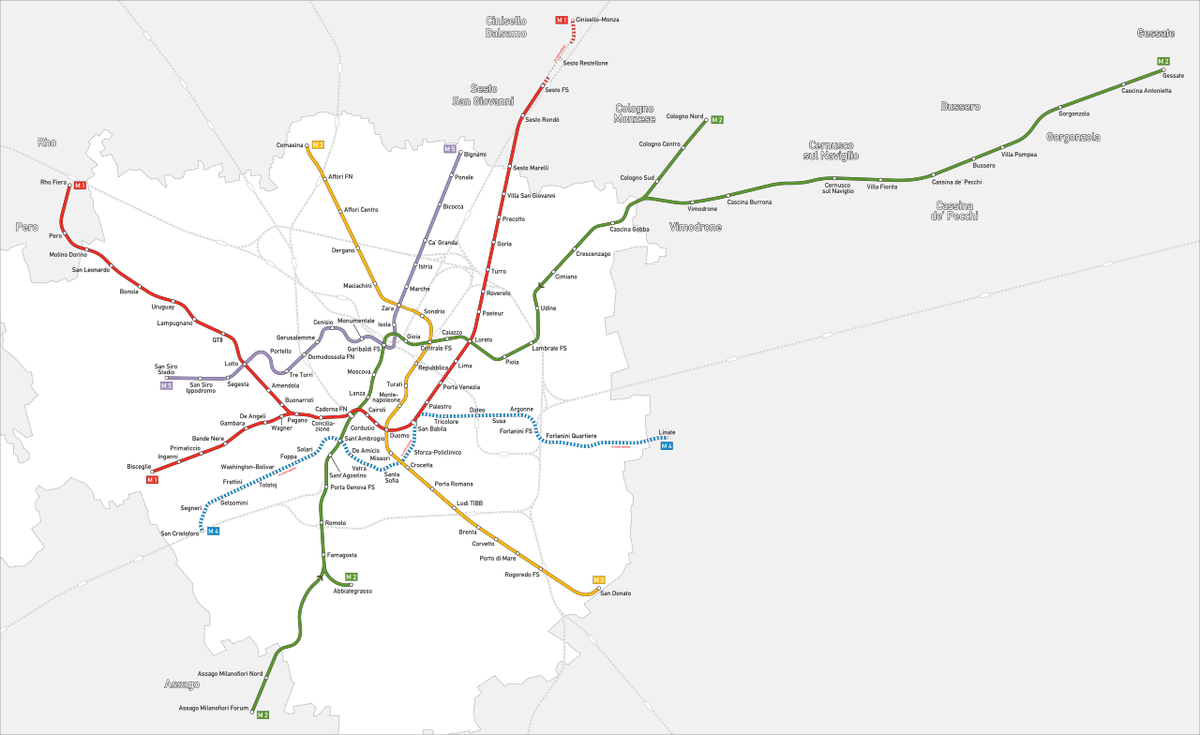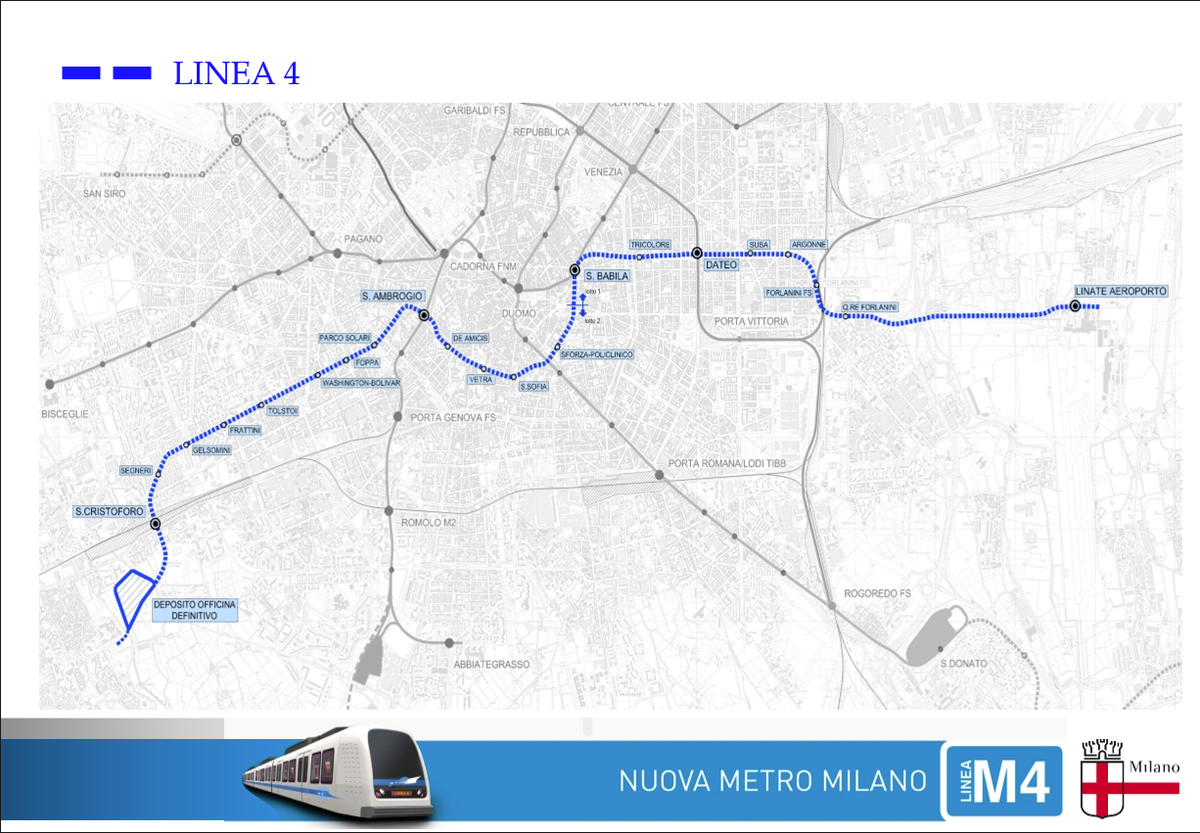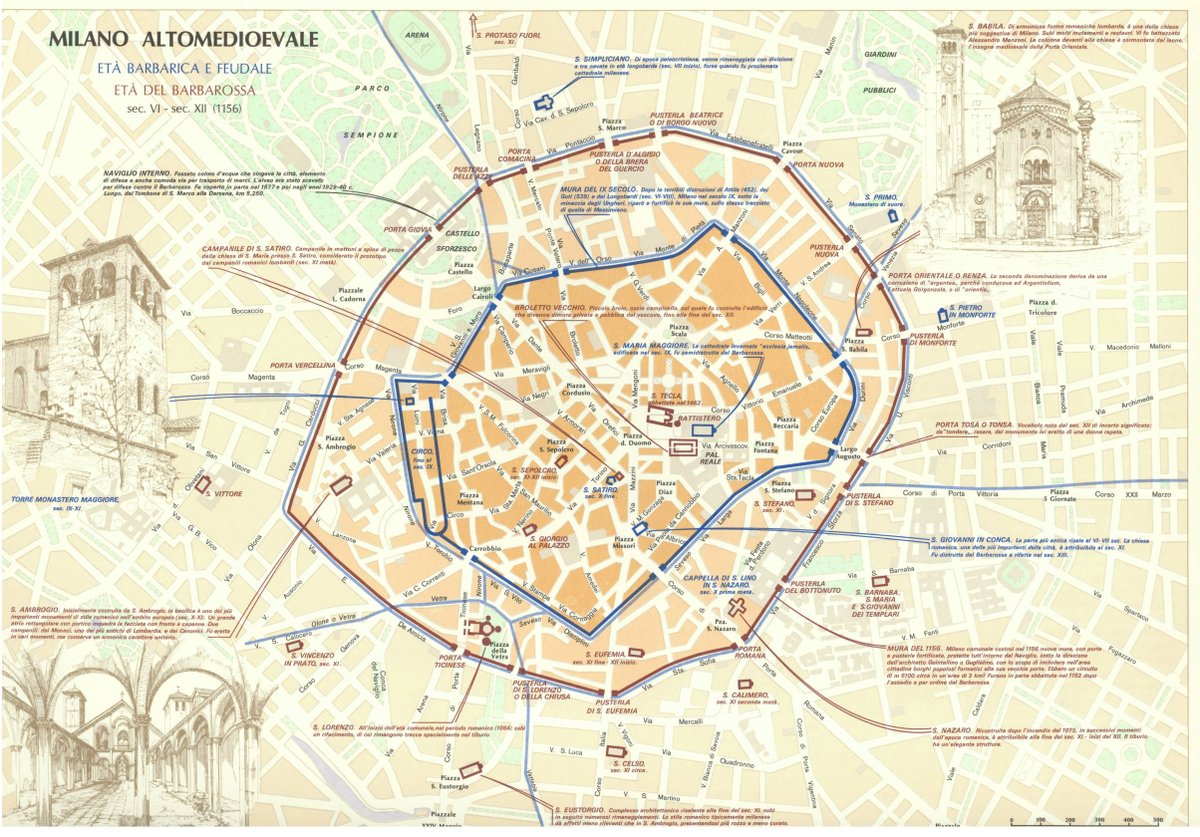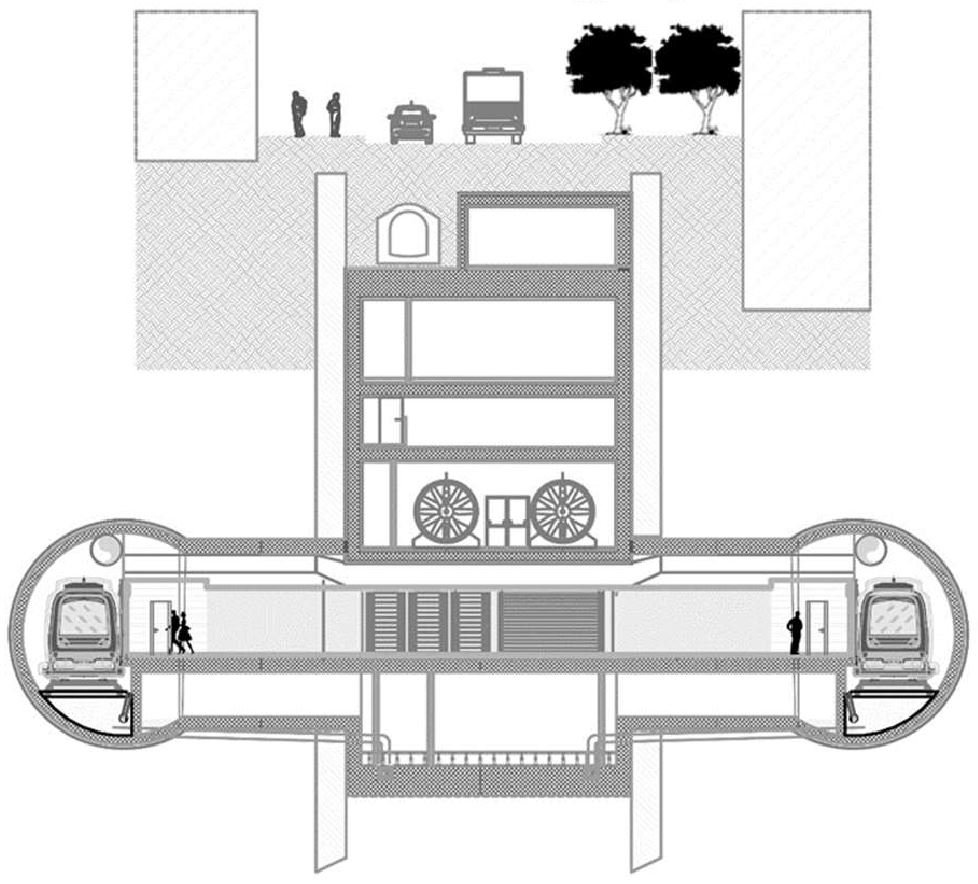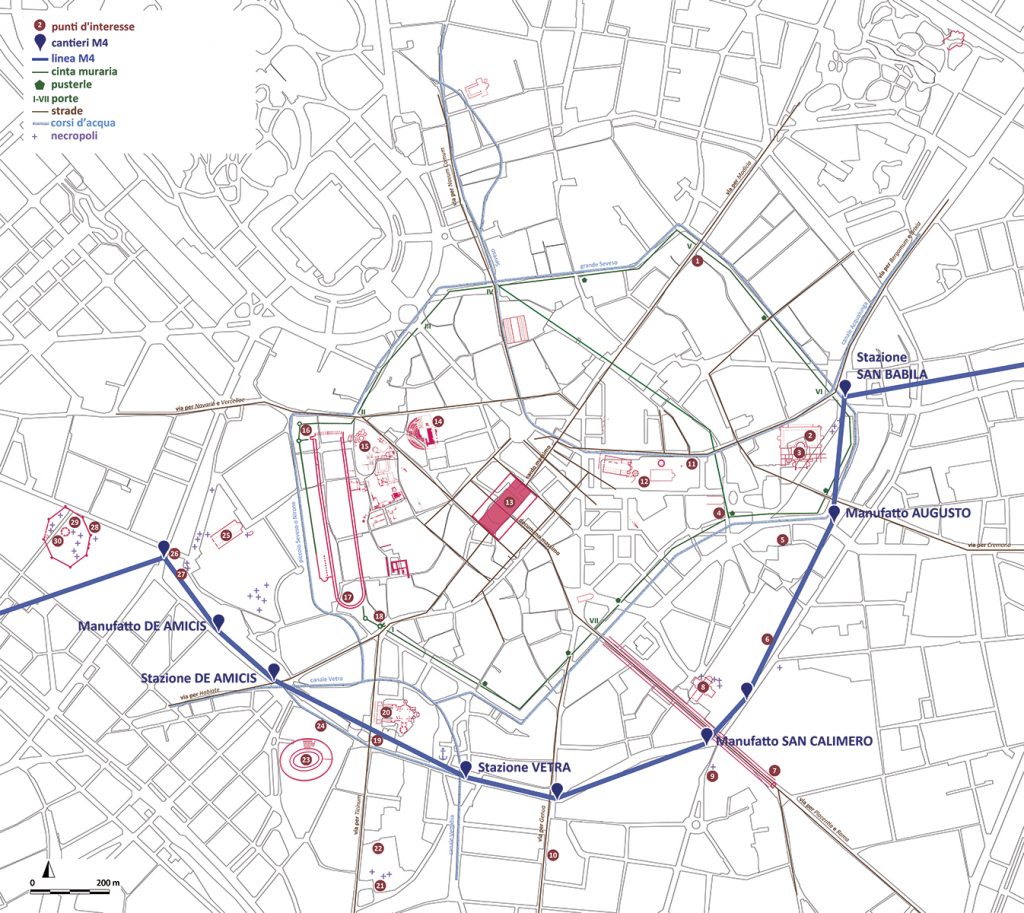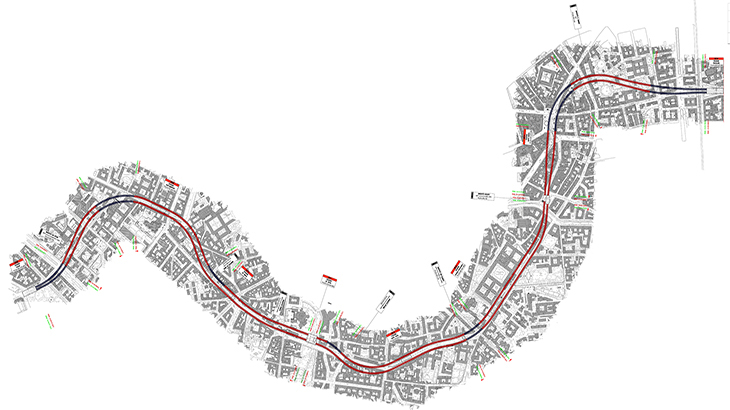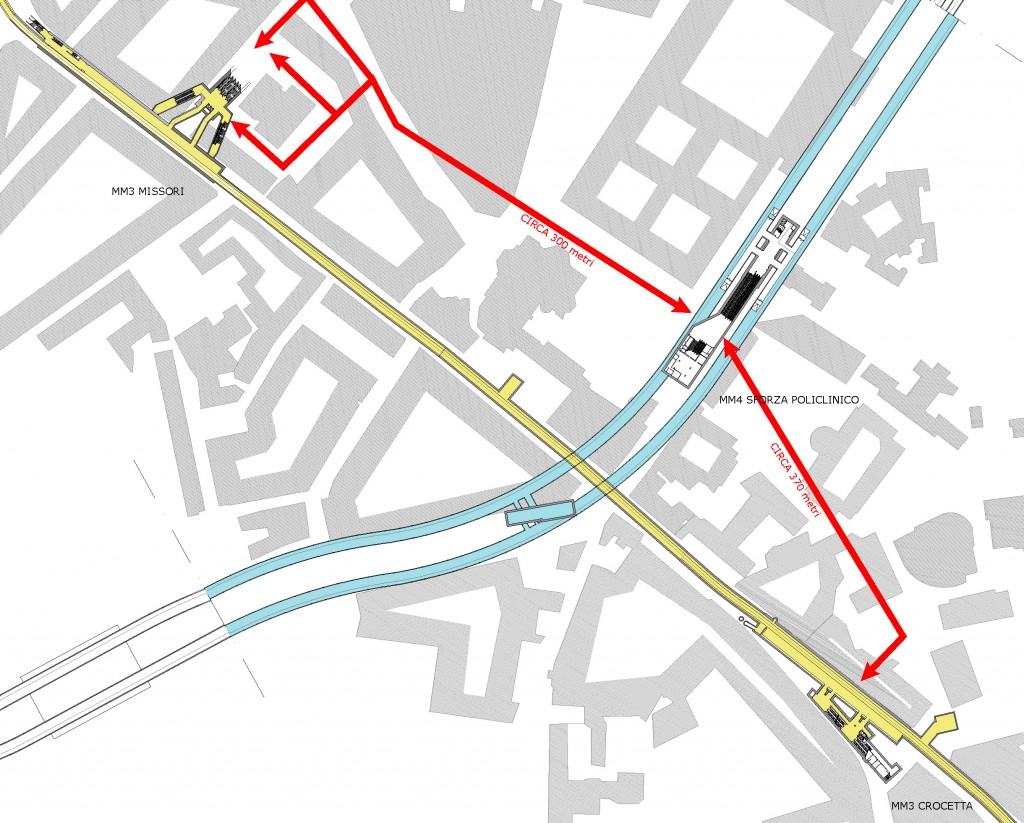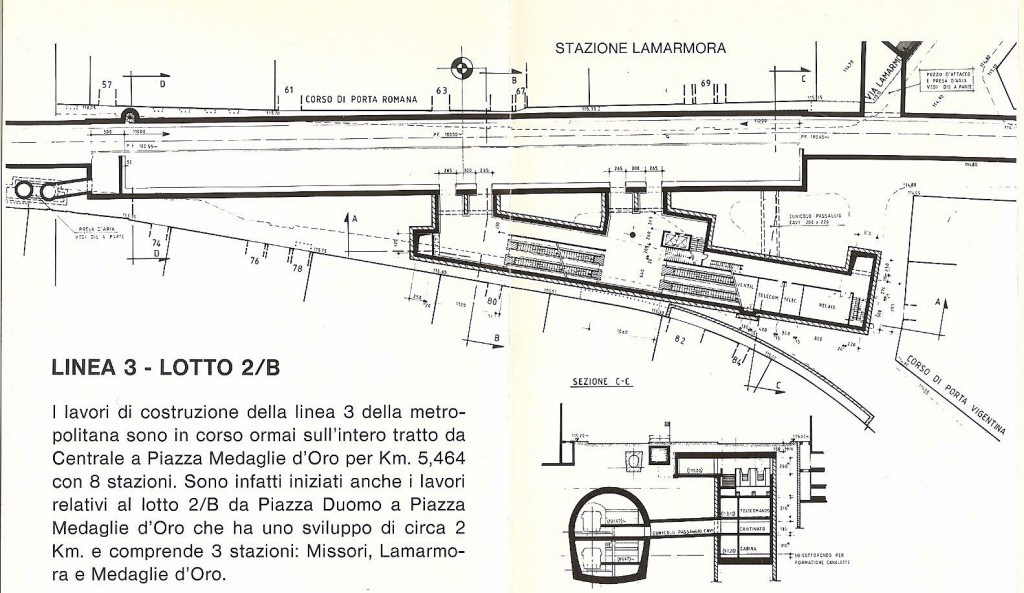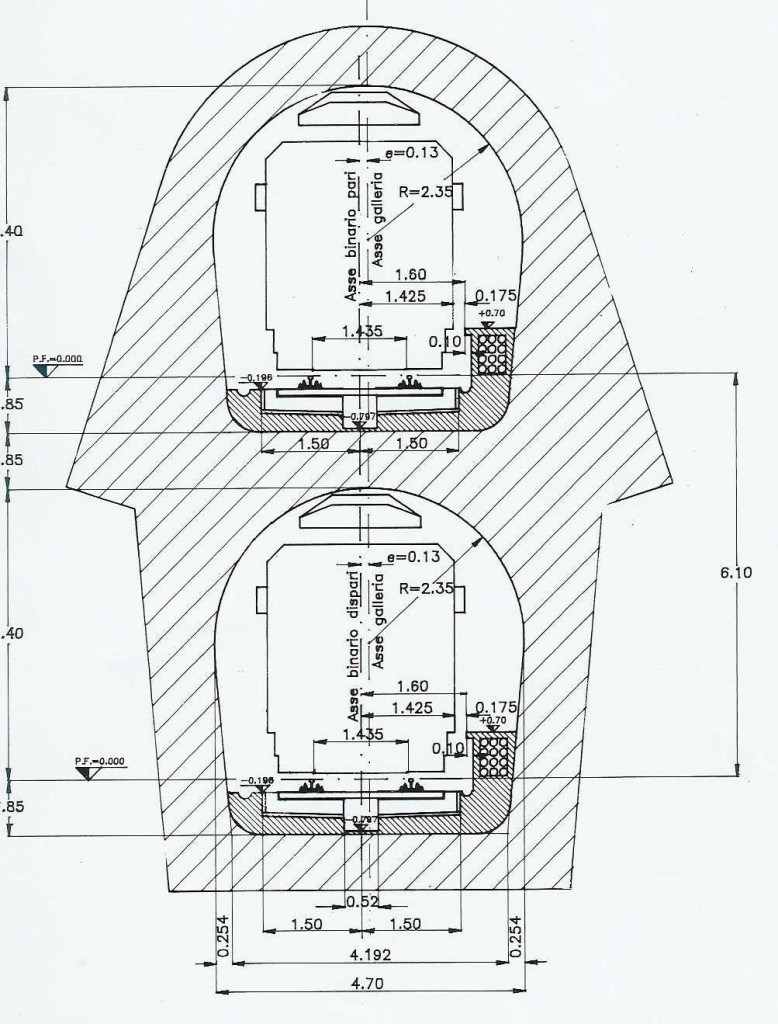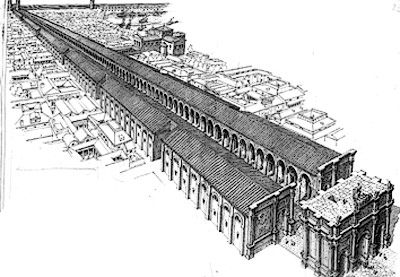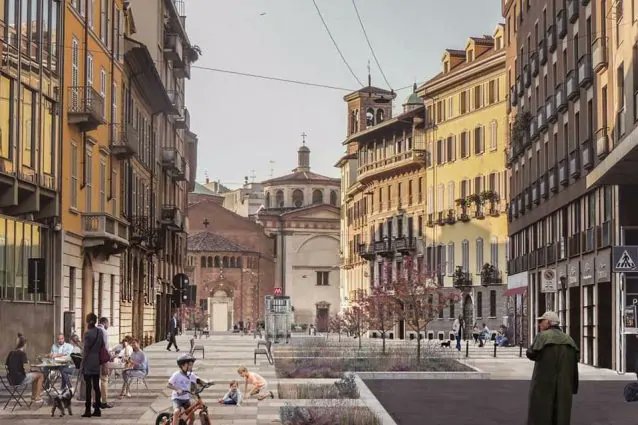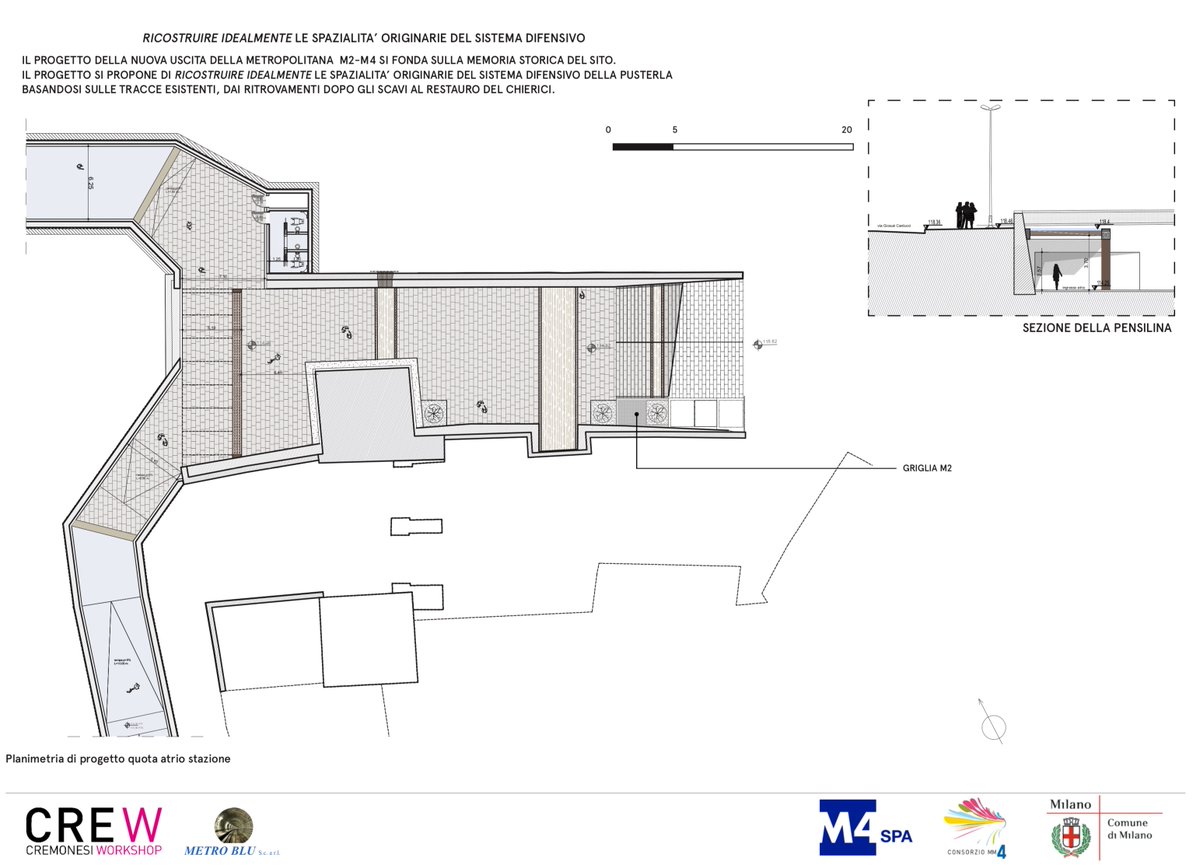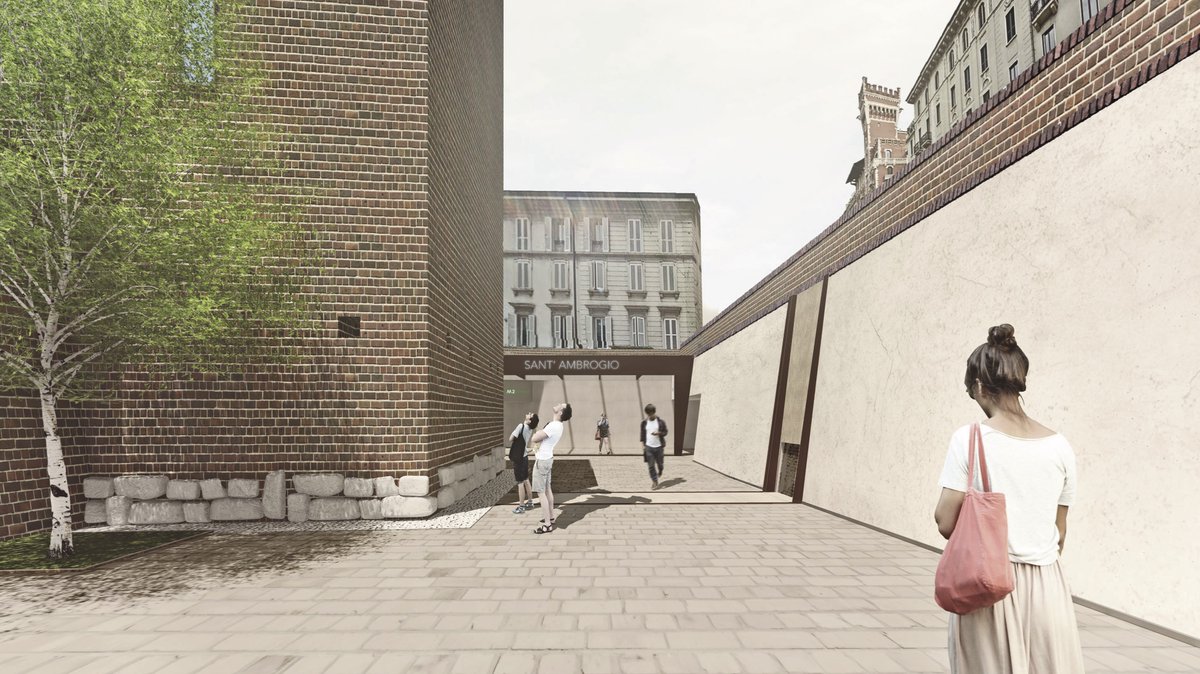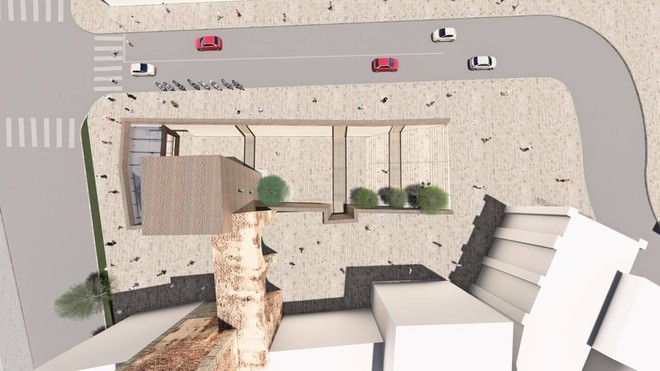1/ I know that there are a lot of admirers here of Milan& #39;s new automated metros M4-M5. That& #39;s why I& #39;m doing a short thread about how the "archaeological panic" and the procrastination of problems (get it done, we will fix this later!) caused a major design flaw to M4.
2/ M4, "la Blu", currently under construction and set to open between 2021 and 2023, will be the fifth metro line of Milan:
15.2 km
21 stations
50 m platforms
fully automated AnsaldoBreda (now Hitachi) trains
90" rush hour headway
100% TBM twin bored tunnels on a E-W alignemnt
15.2 km
21 stations
50 m platforms
fully automated AnsaldoBreda (now Hitachi) trains
90" rush hour headway
100% TBM twin bored tunnels on a E-W alignemnt
3/ M4 crosses 3 metro lines (M1-M2-M3), the passante cross-city tunnel and two S-Bahn surface stations. Logic would say it connects with all of them... ehm well, not really. The initial design misses M3 and almost failed to miss M2.
Why?
well, sort of "archaeological panic"
Why?
well, sort of "archaeological panic"
4/ Unlike M5, that avoids the old city, the central section of M4 pass through the old city core along a semi-circular alignment that follows approximately the southern part of the 12th century city& #39;s wall (red) and crosses part of the roman "Mediolanum" settlement
5/ To minimize cut&cover construction and fit stations within the densely built city center, the 4.5 km central stretch has been built with larger tunnels (8.85 m) that can accomodate both tracks and platforms
6/ To avoid interference with building foundation and other metros, the line is 20-25 m deep and the central alignment has been refined several times to weave away from potential archaeological findings, old building foundations, underground canals, etc.
7/ The problem is that because of this "archaeological phobia" M4 ended up avoiding also the crucial connection with M3, crossing halfway between two stations, at 300-400 m from each.
8/ Of course many pointed it was a very bad idea. Trying to solve the problem, an early hypothesis proposed a 300 m long tunnel to be integrated within the u/g part of the ongoing "policlinico" university hospital redevelopment. But the city failed to secure a deal with them.
9/ Moreover, there are many real constraints: M3 in this section has superposed tunnels alongside a covered canal, under what is probably the remain of the roman "via porticata" colonnade, making superficial works impossible. Plus, the station entrance is on the wrong side
10/ So, even if the city received extra funding from the central govt to built the direct connection, they ended up with a halfway solution last year. A partially underground, partially above ground connection, that is basically, not a real connection
11/ A short tunnel will be built for only half the 300m distance separating M4 from the northern nearby M3 station, The other half will be made via a surface pedestrianization of an existing street, as it pass close to a medieval church built on top of a paleo-christian basilica
12/ This second proposal wasn& #39;t very popular neither and today, with only 1 year 1/2 left to the opening of the central section, it& #39;s unclear how or if M4/M3 will be directly connected.
13/ M4-M2 risked a similar destiny. Fortunately, they find a solution, inserting the entrance and the connection inside the remains of the city moats, just under the alogside the gate with a partially sheltered pergola. Still, people will be forced to exit and enter fare gates
14/ So, this is the story of the (probably) missed connection on Milan& #39;s M4, where the engineering and planning rationality had to give way to heritage and archaeological preoccupations as the main driver of design decisions.
Was it worth it? I have no answer for that.
Was it worth it? I have no answer for that.
This thread is a special gift to say thank you to @alon_levy for organizing #ModernRail2020, as I know they love missed connections soooo much!

 Read on Twitter
Read on Twitter